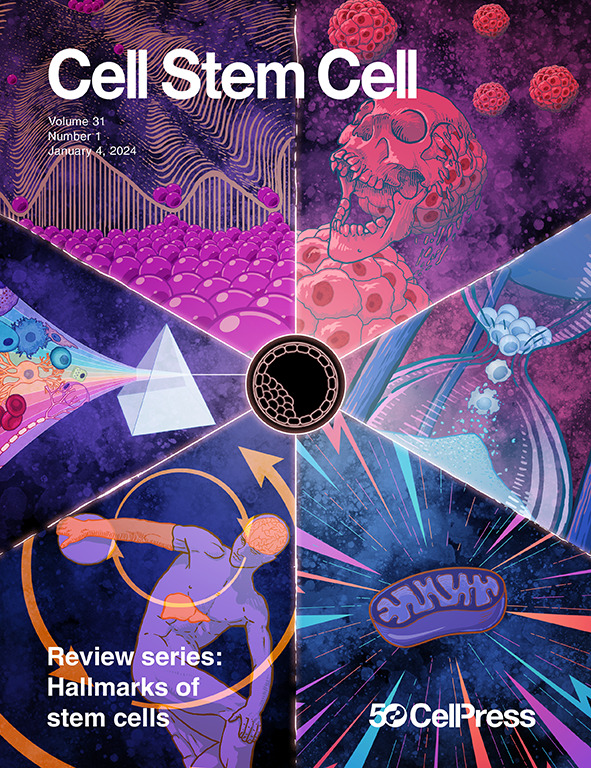多巴胺能神经元在黑暗的免疫掩护下进入大脑
IF 20.4
1区 医学
Q1 CELL & TISSUE ENGINEERING
引用次数: 0
摘要
在没有免疫抑制的情况下,将免疫外来细胞移植到动物体内的能力将是革命性的。Pavan等人的研究表明,人类多能干细胞衍生的多巴胺能神经元祖细胞可以表达8种免疫逃避蛋白,无需免疫抑制就可以移植到人源化小鼠和帕金森病大鼠模型中本文章由计算机程序翻译,如有差异,请以英文原文为准。
Dopaminergic neurons entering the brain under the immunological cover of darkness
The ability to transplant immunologically foreign cells into an animal without immune suppression would be transformative. Pavan et al. show that human pluripotent stem cell-derived dopaminergic neuron progenitors engineered to express eight immune-evasive proteins can engraft in humanized mice and a rat model of Parkinson’s disease without recourse to immune suppression.1
求助全文
通过发布文献求助,成功后即可免费获取论文全文。
去求助
来源期刊

Cell stem cell
生物-细胞生物学
CiteScore
37.10
自引率
2.50%
发文量
151
审稿时长
42 days
期刊介绍:
Cell Stem Cell is a comprehensive journal covering the entire spectrum of stem cell biology. It encompasses various topics, including embryonic stem cells, pluripotency, germline stem cells, tissue-specific stem cells, differentiation, epigenetics, genomics, cancer stem cells, stem cell niches, disease models, nuclear transfer technology, bioengineering, drug discovery, in vivo imaging, therapeutic applications, regenerative medicine, clinical insights, research policies, ethical considerations, and technical innovations. The journal welcomes studies from any model system providing insights into stem cell biology, with a focus on human stem cells. It publishes research reports of significant importance, along with review and analysis articles covering diverse aspects of stem cell research.
 求助内容:
求助内容: 应助结果提醒方式:
应助结果提醒方式:


